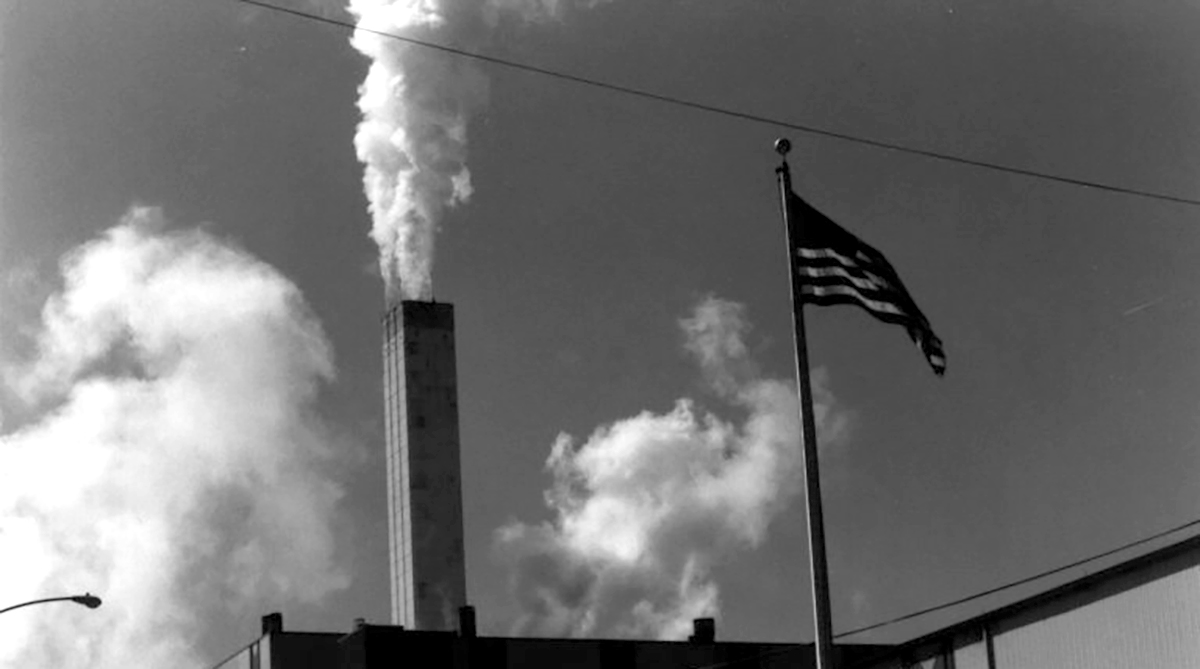Oregon's Medical Waste Incineration Act - SB 488
The Oregon State Senate and House both passed Senate Bill 488!
Governor Kotek signed the bill on Aug. 4th, 2023
Read more
VICTORY!
SB 488, a bill to cap and monitor toxic emissions from waste incineration, passed both the Senate and House. The bill was subsequently signed into law by Governor Kotek on Aug. 4th! Beyond Toxics, an Oregon environmental justice organization, is the primary advocate, leading a coalition of groups concerned about waste incineration for more than four years.
SB 488 will require Covanta Marion, a large municipal waste incinerator located northeast of Salem, to deploy continuous emissions monitoring for the most hazardous chemicals known to harm human health and the environment. In addition, medical waste incineration, which produces the most dioxin, will be capped at 18,000 tons/year.
With the passage of SB 488, Oregon leads the nation in promoting increased understanding, monitoring and regulating of the highly hazardous pollution created when plastics, petroleum products, industrial waste and other materials are burned.
"The passage of SB 488 is a David and Goliath victory," observed Lisa Arkin, Executive Director. "It is also a tremendous win for environmental justice because the incinerator's pollution primarily impacts communities of color living near NE Salem, Woodburn and Brooks. Everyone deserves to breathe clean air and to be assured that their communities are not polluted with dioxin and heavy metals."
We're sending a BIG THANK YOU to SB 488 chief bill sponsors: State Senator Deb Patterson, Representative Courtney Neron, Senator James I. Manning Jr., and Senator Aaron Woods. SPECIAL THANKS to all the legislators that fought for SB 488 every step of the way: Representative Khanh Pham, State Senator Michael Dembrow, Oregon State Senator Janeen Sollman, Senator Rob Wagner. From the Coalition in support of the Medical Waste Incineration Regulations bill, SB 488, we owe a huge debt of gratitude to you for your leadership to get this vital air quality and environmental justice legislation across the finish line.
Read Oregon’s Legislature passes nation’s strictest incinerator monitoring bill by Tracy Loew, Salem Statesman Journal
also: Oregon becomes first state to require higher standard of continuous emissions monitoring at incinerators by Jacob Wallace, Editor, Waste Dive

Lisa Arkin, Executive Director
Chief Co-Sponsors: Senators Patterson and Manning Jr. and Rep. Neron
Regular Sponsors: Senators Campos, Gelser Blouin, Golden, Taylor
Medical waste incineration is outdated and unnecessary!
Oregon's Medical Waste Incineration Act (SB 488A) closes the regulatory loophole in Oregon’s air quality laws that allows a municipal waste incinerator to burn large amounts of medical and industrial waste without being held to stricter medical waste incinerator emissions limits. This would include waste trucked in from out-of-state.
The passage of Oregon's Medical Waste Incineration Act, SB 488A is critical to achieving clean air for the people of Oregon, particularly those living in the mid-Willamette Valley. The large amounts of air toxics emitted from Covanta’s stack has impacted human and environmental health around Marion county for over 30 years.
Burning a greater volume means more toxic pollutants
Each year, Covanta Marion, Oregon’s municipal waste incinerator, burns more than 176,000 tons of municipal, medical and industrial waste. In recent years, the Covanta Marion incinerator has steadily increased the amount of out-of-state hospital and medical waste they burn. Burning medical waste, which is often plastics such as PVC, is known to emit more toxic pollutants than most municipal waste due to the complex nature of medical waste. As medical waste incineration increases, emissions of dioxin compounds and other dangerous chemicals also increase.
The issue of Environmental Justice
Trash dumps and waste incineration are, and have always been, an environmental justice issue because these polluting facilities are routinely placed close to areas with lower-income residents and communities of color. SB 488 will close loopholes in the law that will reduce emissions from waste incinerators and provide a much-needed update to Oregon clean air laws. The result will be improved air quality for communities around waste incinerators.
As outlined below, burning medical waste in a trash incinerator is only viable because of a federal loophole that allows weaker standards.
Medical Waste Incineration Act (SB 488A) 2-page Overview (PDF)
Does Oregon have a solid waste incinerator and what do we know about it?
Yes. The Covanta Marion incinerator is located in Marion County between the cities of Salem and Woodburn. The facility became operational in 1986. Now over 36 years old, Covanta Marion is older than the average useful life of most incinerators. A few facts:
Covanta Marion’s Municipal versus medical waste incineration: the regulatory loophole
Federal regulations for medical waste incinerators are far stricter than those for municipal waste (trash) incinerators. However, a loophole in EPA regulations allows an incinerator classified as a “municipal waste incinerator” to burn significant amounts of medical waste without being held to the much stricter medical waste incinerator emissions limits. Burning medical waste, which is often plastics such as PVC, is known to emit more toxic pollutants than most municipal waste. This regulatory loophole allows the Oregon’s waste incinerator to be regulated under the weaker regulations governing municipal waste incinerator.
As a result, Covanta Marion can burn thousands of tons of imported medical waste while taking advantage of weaker municipal trash incinerator regulations. This makes Oregon a dumping ground for the toxic pollution that other states don’t want.
Background
Covanta Marion and its pollution has been our focus since 2018. In our role as clean air watchdog, Beyond Toxics advocates for policies and regulations that will protect downwind communities from Covanta Marion’s high emissions of toxic pollution. That's why we advocate for SB 488 to regulate Covanta Marion as a Large Hospital and Medical Waste Incinerator due to the large volume of medical waste it burns. Despite the process to issue Covanta a new permit under the Cleaner Air Oregon air quality regulatory program, Oregon's laws are far too weak to substantially reduce community exposure to dioxins, heavy metals and other toxic chemicals from Covanta's stack and ash piles. Beyond Toxics was instrumental in stopping SB 451, a 2019 bill introduced (at the request of Covanta) to increase their profits by trying to sell electricity at higher rates as a “renewable” energy facility. Incinerating waste is not renewable - Oregon must advance zero- waste practices, not incentivize corporations that profit off more waste! We've consistently worked with the community downwind of Covanta and Clean Air Now, a community-based coalition. Environmental monitoring and public education are central to our work. Find out more
ALSO: Read our NEW 2023 Legislative Agenda page to learn more about the bills we are supporting and how you can take action to help us advocate for their passage!
References
(1) Lee MJ, et al., Heavy Metals' Effect on Susceptibility to Attention-Deficit/Hyperactivity Disorder: Implication of Lead, Cadmium, and Antimony. Int J Environ Res Public Health. 2018 Jun 10;15(6):1221. doi: 10.3390/ijerph15061221.
(2) Zhou, Y; Ma, W., Heavy metal exposure and children's health. Springer 2020.
(3) U.S. EPA, Learn About Dioxin. accessed 1/14/2023 at https://www.epa.gov/dioxin/learn-about-dioxin
(4) Source: Oregon DEQ, 2020 Review Report/Permit No.: 24-5398-TV-01 Covanta Marion, p. 72
Resources
To learn more about what we are doing to address and reduce the harmful air toxics emitted from Covanta, review below a selection of our research, environmental monitoring reports, blogs and public testimony submitted to the Department of Environmental Quality.






